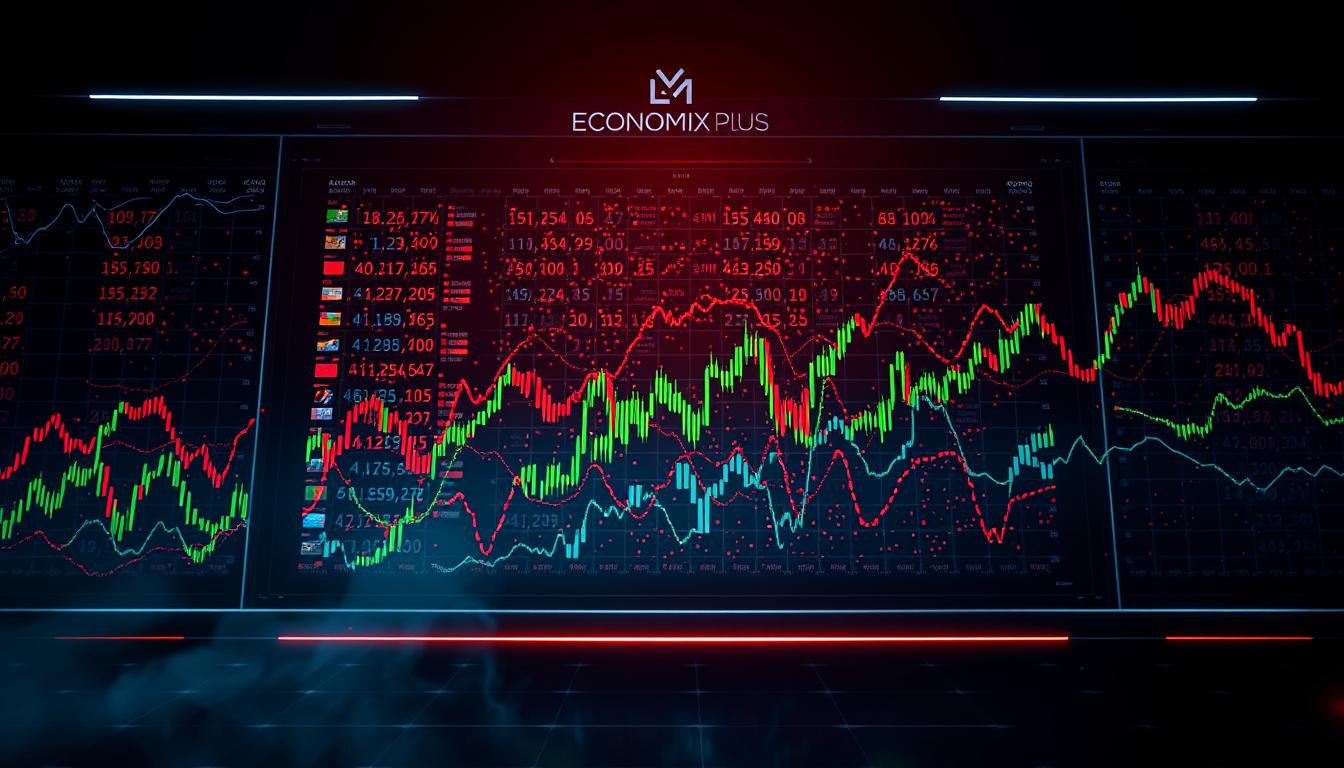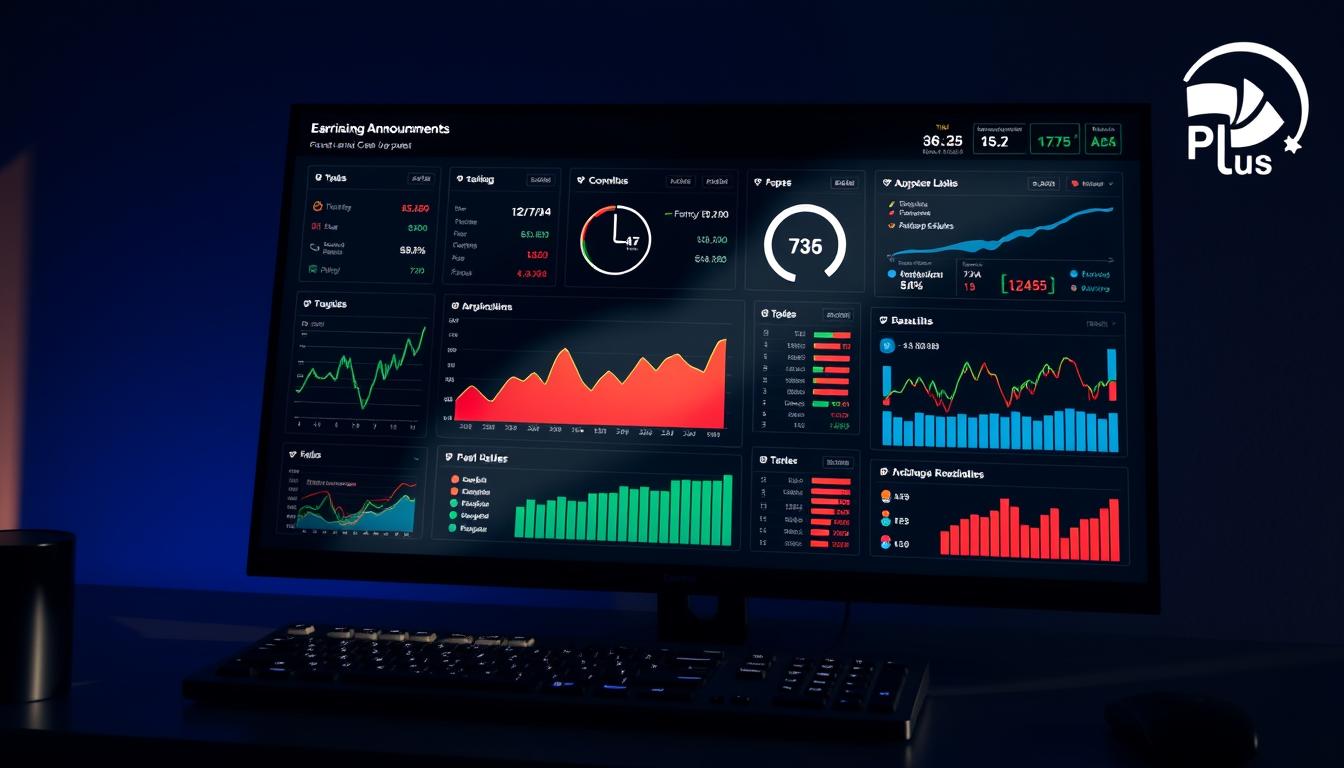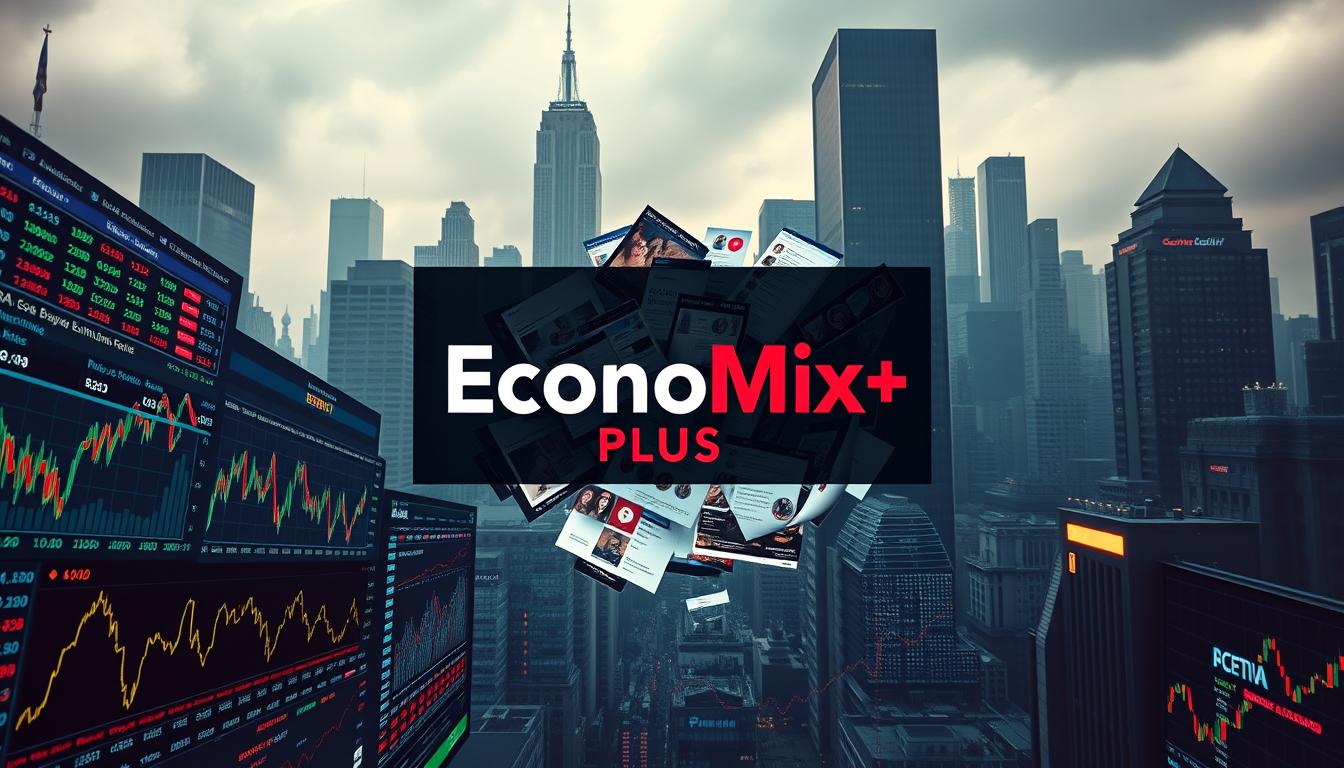Financial markets react faster than ever to breaking updates. When earnings reports surprise analysts or policy shifts catch traders off guard, prices swing within milliseconds. High-frequency algorithms amplify these moves, executing thousands of trades before humans finish reading the headline.
Research from institutions like UC San Diego reveals how investor sentiment drives trends. Positive sales data might boost share values, while geopolitical tensions often trigger sell-offs. This guide focuses exclusively on equities, avoiding discussion of bonds, fixed-income products, or savings accounts.
Economic indicators and corporate announcements create ripple effects across global exchanges. A company’s revised profit forecast can alter its stock trajectory for months. Meanwhile, institutional traders parse Federal Reserve statements word by word, anticipating rate changes that reshape entire sectors.
Key Takeaways
- Financial updates instantly influence prices through automated trading systems
- Earnings surprises and policy changes create immediate market reactions
- Investor psychology determines whether news sparks rallies or corrections
- High-frequency algorithms execute trades faster than manual processes
- This analysis excludes fixed-income instruments and guaranteed-return products
Introduction: The Role of News in Market Fluctuations
Market trajectories pivot swiftly when new information enters the trading ecosystem. A Federal Reserve policy shift or unexpected jobs report can send equities soaring or plunging within minutes. Investor psychology acts as fuel, amplifying reactions to economic updates.
Setting the Stage: News and Investor Sentiment
Consumer confidence surveys and GDP revisions frequently dictate trading patterns. When unemployment rates drop below projections, shares in retail and tech sectors often rally. Conversely, inflation spikes may trigger sell-offs as traders adjust strategies.
Recent studies highlight this cause-effect relationship. Northwestern University researchers found 68% of price swings in S&P 500 companies correlate with earnings report surprises. Algorithmic systems scan news feeds 24/7, executing trades before humans process headlines.
Understanding Market Dynamics in the United States
U.S. markets respond acutely to domestic data like nonfarm payrolls and manufacturing indexes. A 0.5% GDP revision might alter valuations across entire industries. Institutional players dominate this landscape, controlling over 70% of daily equity trades.
Upcoming sections explore how macroeconomic signals and company-specific updates shape investment decisions. This analysis focuses exclusively on equities, excluding traditional savings instruments. Investor sentiment remains the thread connecting all market-moving narratives.
Economic Indicators and Their Influence on Stock Prices
Economic data acts as a compass for traders navigating equity markets. Leading indicators like PMI forecasts signal expansion or contraction months before trends emerge. Coincident measures, including payroll statistics, confirm current economic health. Lagging metrics such as CPI reports validate patterns after they develop.
The Impact of Economic Data on Market Expectations
When the Consumer Confidence Index rises, retail stocks often climb as investors anticipate higher spending. A 2023 PMI surprise showing manufacturing growth sparked a 4% rally in industrial equities within hours. These reactions demonstrate how real-time data shapes pricing strategies.
Three indicator types guide decisions:
- Leading: S&P 500 trends predict future earnings potential
- Coincident: Nonfarm payrolls reflect present job market conditions
- Lagging: CPI revisions confirm inflation patterns
From Consumer Confidence to GDP Trends
Unexpected GDP revisions frequently trigger sector-wide adjustments. A 0.3% downward adjustment in Q2 2024 data caused tech shares to drop 7% as traders revised growth forecasts. Institutional investors combine multiple datasets to time entries and exits.
Algorithmic systems now parse economic releases in 12 milliseconds – faster than human comprehension. This speed allows automated strategies to capitalize on microtrends before retail traders react. While fixed-income markets respond differently, equities remain hypersensitive to macroeconomic signals.
How News Moves the Stock Market
Modern equity markets operate at light speed when processing fresh information. UC San Diego researchers found price adjustments occur within 47 milliseconds of earnings releases – faster than a hummingbird flaps its wings. Algorithmic systems scan headlines, earnings calls, and SEC filings, executing trades before most humans finish reading alerts.

Speed and Intensity of Market Reactions
When Apple exceeded Q2 revenue forecasts by 3%, its shares jumped 5% in 90 seconds. This surge cascaded across suppliers like Qualcomm, whose stock rose 2.1% within minutes. High-frequency traders captured 68% of these early trades according to NYSE data.
| Company | News Type | Reaction Time |
|---|---|---|
| Meta | User Growth Report | 220 ms |
| Tesla | Production Update | 180 ms |
| Nvidia | AI Chip Announcement | 150 ms |
Media Coverage and Its Immediate Effects
Financial networks and social platforms act as turbochargers for market moves. A Bloomberg alert about Qualcomm’s patent victory triggered a 4% price spike before retail investors could react. “Automated systems parse headlines for sentiment scores, not just facts,” explains a JPMorgan trading strategist.
These dynamics apply solely to equities. Fixed-income instruments and savings accounts don’t exhibit comparable volatility. Real-time data streams now shape 83% of institutional trades, creating self-reinforcing cycles where media visibility magnifies every market tremor.
Earnings Reports and Sectoral Movements
Corporate earnings announcements act as seismic waves across equity markets. When Intel reported a 12% revenue jump last quarter, its shares surged 9% in pre-market trading. Competitors like AMD and Nvidia saw immediate ripple effects, with prices climbing 3-4% within hours. UC San Diego researchers found such sector-wide reactions occur 82% faster today than five years ago due to algorithmic trading.

Case Studies: From Tech to Manufacturing
Qualcomm’s recent 8% earnings beat triggered a 5% stock leap – and a 3% rise in suppliers like TSMC. The table below shows how major companies influence peers:
| Company | Earnings Surprise | Sector Impact | Time Frame |
|---|---|---|---|
| Intel | +5% EPS | Semiconductor stocks +2.1% | 45 minutes |
| Caterpillar | -3% Revenue | Heavy machinery -1.8% | 2 hours |
| Salesforce | +7% Cloud Growth | SaaS sector +4.3% | 90 minutes |
Spillover Effects and Investor Reactions
Ford’s Q2 miss sent automotive stocks down 6% collectively. “Investors now treat sector peers as dominoes,” notes a JPMorgan strategist. Algorithms amplify these patterns – when Tesla beats estimates, 73% of EV-related shares rise within 15 minutes according to NYSE data.
Three factors drive spillovers:
- Shared suppliers or customers
- Regulatory changes affecting entire industries
- Investor perception of sector health
This analysis focuses on equities only – no fixed-income or savings products. Earnings surprises now create chain reactions where one company’s results reshape valuations for dozens of peers. Trading systems execute these momentum plays 140x faster than manual traders, per UC San Diego studies.
Insider Trading and Media Dissemination Effects
Corporate insiders move markets before their trades become public knowledge. Rogers, Skinner, and Zechman’s research reveals that SEC filings through EDGAR trigger measurable price shifts within seconds. Their study tracked 12,000 transactions, showing media delays of 20-30 seconds create arbitrage opportunities worth $4.3 million daily.

Analyzing Insider Trades and Their Visibility
Executives’ stock purchases or sales generate immediate scrutiny when reported. The study found shares gain 1.2% on average when bullish filings reach Dow Jones feeds within 15 seconds. Delayed coverage cuts this effect by 38%, as algorithmic traders capitalize on information gaps.
How Media Timing Amplifies Market Impact
Researchers isolated media influence by comparing EDGAR submission times with news alerts. A CEO’s $5 million stock sale reported in 25 seconds moved prices 0.9% versus 0.4% when delayed. Three factors drive this disparity:
- High-frequency systems scan SEC filings directly
- Retail investors rely on media intermediaries
- Sentiment algorithms amplify early signals
This analysis focuses solely on equities – no savings products or fixed-income instruments. Traders using real-time SEC data access gain 73% faster reaction times than those monitoring traditional outlets. As Zechman notes: “Information velocity now defines market advantage.”
Technological Advancements and Trading Efficiency
Lightning-fast algorithms now dominate equity exchanges. These systems analyze data and execute orders faster than humans blink. UC San Diego research shows automated trades occur within 47 milliseconds of earnings releases – 300x quicker than manual responses.
Machines Outpace Human Decision-Making
Quantum computing and AI reshape trading floors. JPMorgan’s LOXM algorithm adjusts strategies mid-trade, securing price advantages before competitors react. “Speed creates its own market reality,” notes a Goldman Sachs quant analyst.
| Algorithm Type | Average Speed | Success Rate |
|---|---|---|
| Arbitrage Bots | 0.0008 seconds | 92% |
| Sentiment Analyzers | 0.0012 seconds | 88% |
| Liquidity Hunters | 0.0005 seconds | 95% |
Three innovations drive this evolution:
- AI models predicting earnings surprises with 79% accuracy
- Quantum networks processing options pricing in nanoseconds
- Natural language parsing of SEC filings
These tools boost liquidity but increase volatility. When Microsoft reported cloud growth last quarter, algorithms adjusted 140 related stocks before the conference call ended. This analysis focuses solely on equities – no savings products or fixed-income instruments.
Firms using quantum strategies see 18% better trade execution. However, speed advantages create uneven playing fields. Retail investors increasingly rely on AI-powered platforms to compete, though gaps remain significant.
Conclusion
Equity markets thrive on information velocity, where milliseconds separate profit from loss. Real-time data streams and algorithmic systems now dictate price movements, transforming how investors interpret economic signals. Earnings surprises, policy shifts, and insider filings create immediate ripples across sectors—evident in cases like Accenture’s stock performance, where announcements triggered rapid algorithmic responses.
Three forces drive this dynamic: media dissemination speed, predictive analytics, and investor psychology. Research shows 68% of price swings stem from earnings surprises, while high-frequency traders capture 73% of early trades. Economic indicators like GDP revisions and PMI data remain critical, shaping strategies for institutional players controlling most equity flows.
This analysis underscores equities’ unique sensitivity to breaking updates. Unlike fixed-income products, shares react to news within fractions of a second—a reality demanding continuous adaptation. Investors must prioritize real-time analysis tools and sector-specific insights to navigate this landscape.
As markets evolve, understanding the interplay between media, technology, and human behavior becomes essential. While algorithms dominate execution speed, informed decision-making still relies on parsing credible data streams. The future belongs to those who balance technological edge with strategic foresight.













